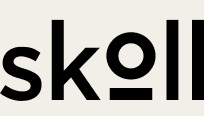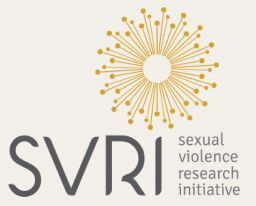Back to basics: Why is media literacy so important?
Today, we face echo chambers and filter bubbles1 — supercharged by algorithmic bias — where individuals are exposed primarily to information that aligns with their existing beliefs. We felt it was crucial to reflect on what media literacy means and the current best practices implemented around the world.
The ongoing war in Gaza is a poignant example of the importance of media literacy2. Misinformation is rampant where conflicting narratives and emotional appeals flood our screens, making it challenging to ascertain the truth amid the chaos. Media literacy is crucial in this context to empower individuals to critically assess the information presented and form informed opinions, and even raise awareness about misinformation news.
A lack of trust in media is a prevalent issue3, not only in mainstream media and social media platforms but also in individuals' ability to discern fact from fiction. A significant portion of people trust no sources or even themselves4 when it comes to navigating the vast sea of online information.
A majority of news consumers identify two key elements to discerning what is fact from fiction online; that is the source and the facts5. This shows that media literacy does work where these individuals have learned how to investigate different types of content and assess its credibility. However, there is a lot of room for improvement particularly given the proliferation of generative AI tools like ChatGPT and Bard which have the potential to manipulate audio and video content6 within minutes, making it even harder to trust what we see and hear.
So how do we navigate the media literacy and trust dilemma?
The ease of content creation and sharing has led to an overwhelming influx of information, much of which lacks credibility.
In the Global North, emphasis is often placed on digital literacy and critical thinking skills, alongside media literacy education in schools. Larger World countries may require tailored approaches that account for lower digital access and diverse languages, cultural contexts and sometimes civil unrest or political and governance turmoil.
Even within Europe7, there is a media literacy divide between North, South and East Europe. Collaboration between governments, civil society, and technology companies is crucial in this endeavor. For instance Finland's success in media literacy and resilience to misinformation8 is attributed to its unique approach to education coupled with collaboration between educators, journalists, and government officials. Poynter’s MediaWise initiative reached 21M people through online educational content and fact checking training9 for teenagers and students.
Addressing the challenges of media literacy requires a multifaceted approach. Governments and institutions around the world are implementing various initiatives and programs to enhance media literacy among their populations. However, it is essential to recognize that one-size-fits-all solutions may not work universally.
Quick take: How should we develop engaging media literacy tools and resources?
Under the Meedan Independent Media Response Fund, the Annie Lab team gathered and debunked misleading posts related to climate change and renewable energy associated with China. They then published a multilingual report that delves into the nature and dissemination of this climate misinformation in China.
We asked Masato Kajimoto, Editor-in-chief at Annie Lab about their approach to engage their audience with material that promotes media literacy, and he explained that "Annie Lab’s primary goal is to provide a real newsroom environment for students to practice the skills and tools they learn. Our educational approach is designed to nurture the future generations of news consumers with fact-checking expertise, discerning attitudes, and critical thinking."
Collaboration between fact checkers and news consumers can promote media literacy
Countering misinformation requires engagement and collaboration between fact-checkers and the general public10 to improve media literacy and ability to spot fake news.
With Meedan’s Check tipline, anyone can report suspicious content online and share more context to help fact-checkers verify claims. By doing so, individuals actively and critically engage with content they are exposed to, increasing their media literacy skills, while also supporting counter-misinformation efforts.
How organizations in the Larger World are addressing media literacy
In countries marked by widespread digital divide (particularly in rural areas), extremely diverse languages and cultural perspectives and the rise of social media use, media literacy initiatives call for all stakeholders to take into account the various factors that influence the spread of false information. Here are a few that have actively championed media literacy in the region:
In Latin America, Meedan’s partner Agência Mural launched a media literacy project called Clube Mural to provide media skills development training for journalism students in the peri-urban area of São Paulo11; while Instituto Palavra Aberta's established EducaMídia12 which trains teachers and educational organizations and supports policy makers working with young people to be responsible content consumers and content creators in society. Meedan, in collaboration with Birmingham City University, spearheaded a pilot project in Brazil that seeks to enhance media literacy and misinformation education by leveraging offline games as a novel approach to the learning experience.
In Asia Pacific, our partner VERA Files provides training and mentoring of journalists, students and civil society organizations, especially those whose opportunities for capacity building are scarce and as a result have built a network of media savvy contributors13.
Our North Africa West Asia (NAWA) Media Newsroom publishes and continuously updates its Media Credibility Index14 in collaboration with journalism students in the region to help journalists but also citizens identify credible news sources in their countries.
In Sub-Saharan Africa, Media Foundation for West Africa (MFWA) advocates for media freedom and promotes media literacy in all 16 West African countries15 by providing training and resources to journalists and citizens to enhance media literacy and promote responsible journalism. At the height of the Covid-19 pandemic, the Africa Women Journalism Project (AWJP) was established by our partner to provide media literacy skills training to women journalists16 who produce stories on underreported issues affecting minority and marginalized groups in the region.
Conclusion: The critical importance of media literacy in today's information landscape
There is a need for ongoing efforts to promote media literacy, especially considering the growing threat posed by AI-generated content that can manipulate audio and video, making it even more challenging to trust what we see and hear.
Tailored approaches to media literacy are essential, as different regions have varying levels of digital access, cultural contexts, languages, and political dynamics. Collaboration between governments, civil society, and technology companies is crucial in this endeavor.
Collaboration and engagement are central to our approach, and we cannot stress enough the importance of fact-checkers working alongside the general public to enhance media literacy.
—
This blog was published in Meedan’s Checklist newsletter, October 2023 edition.
Interested in keeping up with the latest blogs from Meedan? Subscribe to the Checklist Newsletter!
—
Footnotes
1 www.wired.co.uk/article/tiktok-filter-bubbles
2 www.nbcnews.com/news/world/misinformation-israel-hamas-spreading-social-media-rcna119345
6 pen.org/navigating-generative-ai-and-the-threat-of-disinformation
8 www.cip.uw.edu/2023/03/01/finland-media-literacy
10 www.pnas.org/doi/10.1073/pnas.1920498117
11 www.agenciamural.org.br/nasce-area-de-treinamento-e-laboratorio-de-jornalismo-da-agencia-mural
14 ar.nawamedia.org/media-credibility-index
15 www.mfwa.org
We collaborated with 53 partner organizations worldwide to design and carry out our 2024 elections projects. We extend special gratitude to our lead partners in Brazil, Mexico and Pakistan, whose work we highlight in this essay.
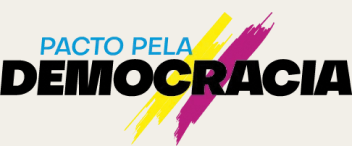
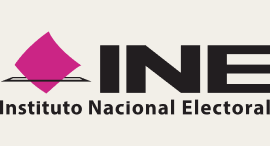
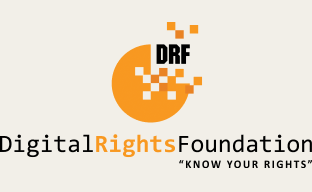
The 2024 elections projects featured in here would not have been possible without the generous support of these funders.
